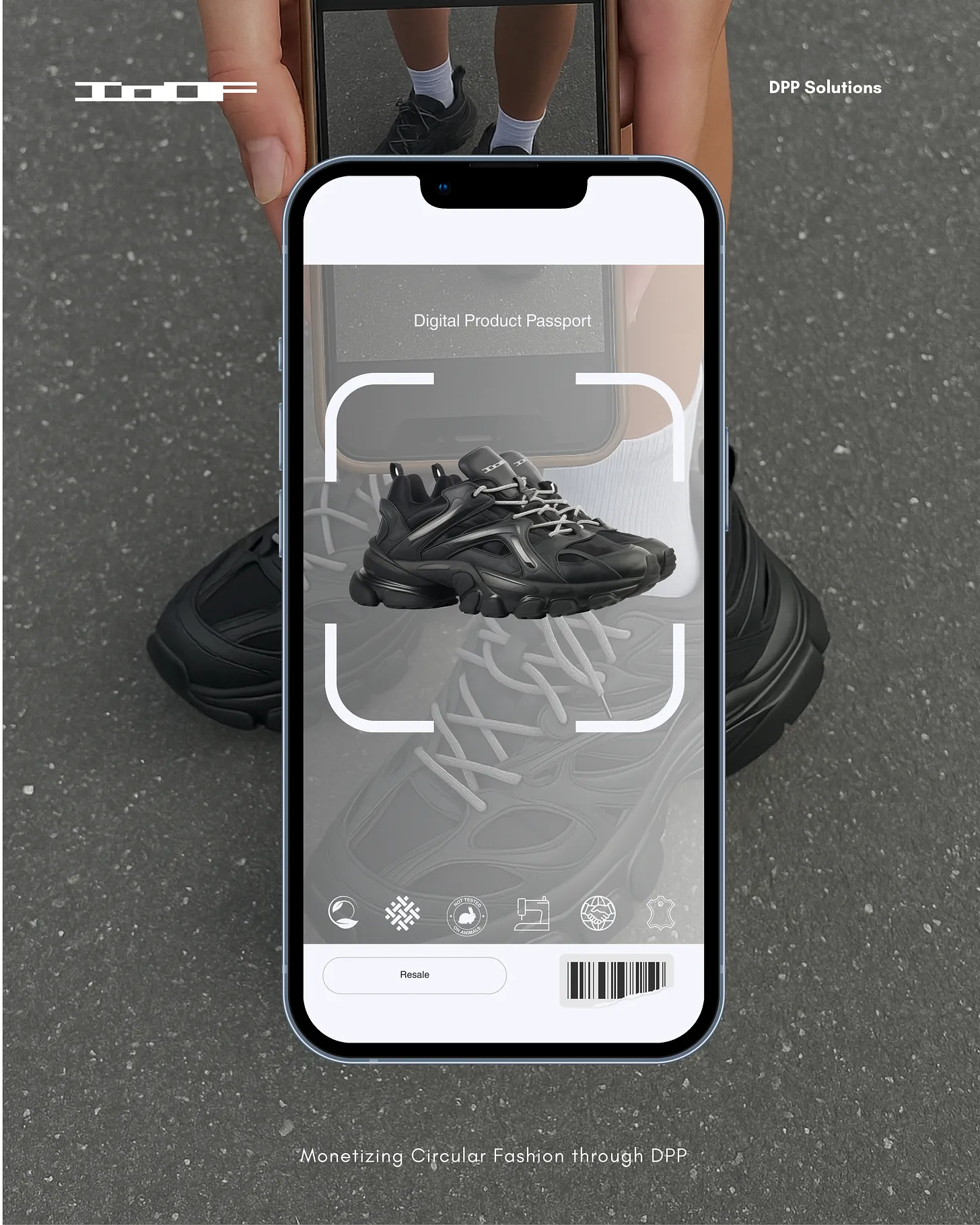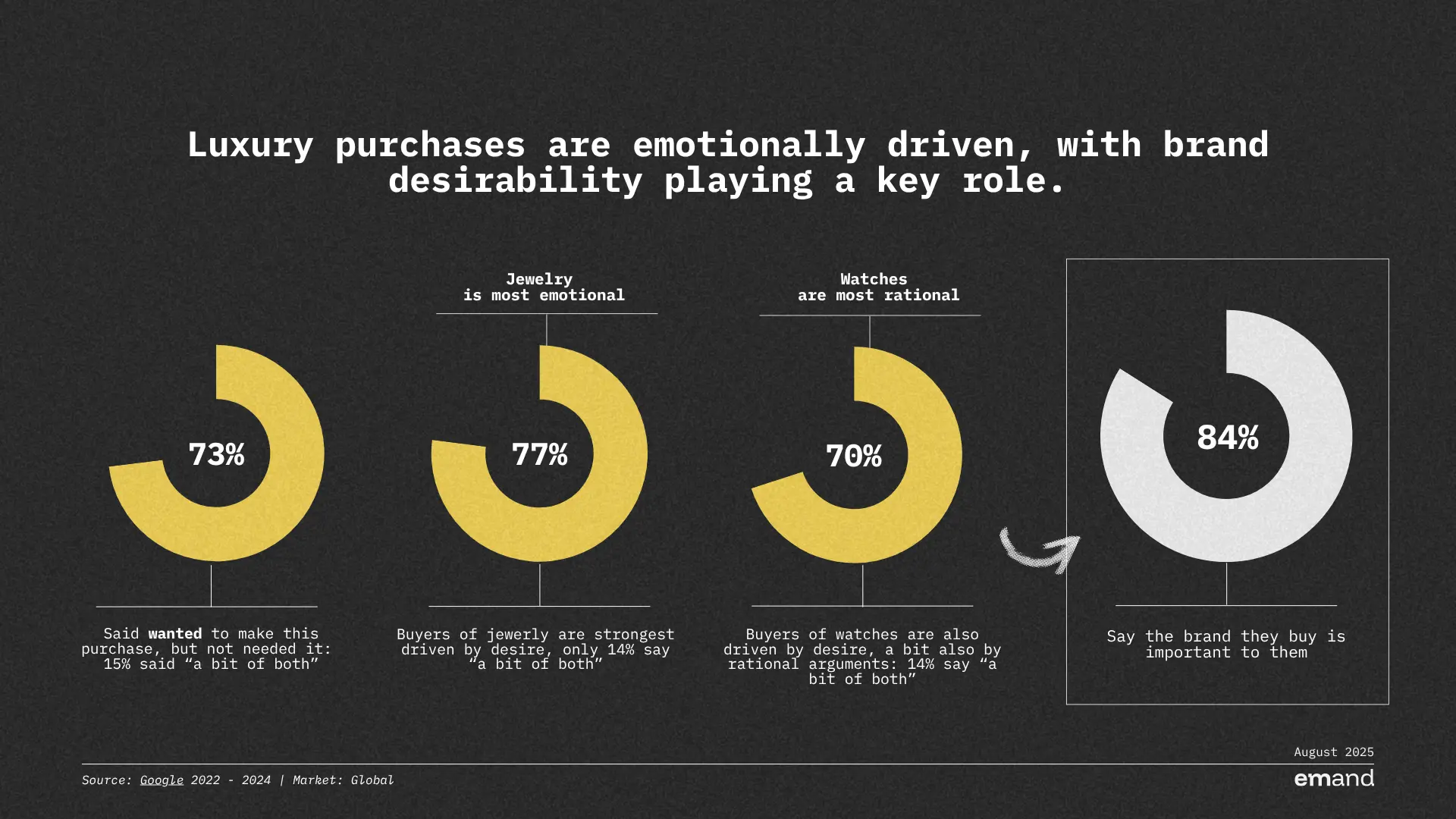From Storytelling to Proof: The Rise of Digital Product Passports
The Digital Product Passport is the next major shift in how luxury brands define value. It acts as a digital identity card for each product, containing verified data on material origin, craftsmanship, ownership history, and even repair or resale activity.
By 2030, DPPs will be mandatory in the EU textile sector under the Ecodesign for Sustainable Products Regulation (ESPR). But forward-thinking luxury houses aren’t waiting. They see this as an opportunity to turn transparency into brand equity.
How does Digital Product Passport (DPP) Work?
A Digital Product Passport is essentially a digital identity for a physical item. It links the product to a digital record (via QR code, NFC, blockchain, etc) that contains relevant data: origin of materials, manufacturing process, authenticity certificate, care/resale details, end-of-life instructions.
For luxury brands, the DPP offers multiple benefits:
- Reinforces authenticity and combats counterfeiting.
- Enhances consumer engagement - buyers don’t just own a piece, they own its story.
- Prepares brands for upcoming regulations (especially in the EU) that will require deeper product information.
- Unlocks new opportunities around resale, after-care, provenance verification, and even circular economy initiatives.

Why This Is Especially Relevant to Jewelry
Jewelry carries more than material value - it holds emotion, legacy, and cultural meaning. That’s why transparency in this category is so powerful.
For jewelry brands, DPPs unlock:
- Authenticity → Each gemstone and metal can be verified in real time.
- Ethical credibility → Proof of origin and responsible sourcing builds trust.
- Resale value → Traceable ownership and condition records make pieces more desirable on the secondary market.
- Sustainability narrative → Data-backed transparency reinforces luxury values of quality and longevity.
According to Emand’s 2025 Market Insights, 77% of jewelry purchases are driven by emotion — but modern consumers are adding reassurance to that equation. They want beauty with proof.

A concrete example: The UK-based jewelry brand Missoma partnered with Vaayu Tech to launch DPPs across its collections, enabling customers to trace every step from ethically sourced gemstones to the final handcrafted piece.
Key Elements of a Jewelry DPP Strategy
If you’re advising luxury jewelry brands (or working on one), here are key elements to consider:
- Unique Digital Identifier
Each product needs a unique ID (serial number, QR/NFC) that links to the DPP. - Data Capture & Supply-Chain Mapping
- Origin of raw materials (mine, lab, recycled).
- Manufacturing process, location, responsible parties.
- Certifications (ethical sourcing, sustainability).
- Lifecycle data: care instructions, potential for repair/resale/recycle.
As one study noted: DPPs require brands to “collect and share data from a product’s entire lifecycle accessible in the form of a ‘digital twin’.”
- Origin of raw materials (mine, lab, recycled).
- Consumer Access & Engagement
The DPP shouldn’t just be internal. Provide consumers with access via scanning or app - let them engage with the story, verify authenticity, see sustainability credentials. Research shows luxury consumers want more than just “sustainability data” - they want narrative and connection. - Resale & Circular Economy Integration
Since many luxury jewelry pieces are resold or inherited, the DPP should facilitate ownership transfer, provenance verification, repair/maintenance history. This enhances secondary market value and brand ecosystem. - Compliance & Future-Proofing
With regulations looming (especially in the EU), it’s better to implement early. - Brand Storytelling & Marketing
Use the traceability data as part of your luxury narrative: craftsmanship, heritage, sustainability - making the DPP a feature, not a burden. Brands that communicate this well turn DPPs into advantages.
Challenges & Considerations
- Data infrastructure: Building scalable systems for large product lines, global supply chains, and future evolutions is complex.
- Supplier transparency: Many materials pass through multiple layers; gathering detailed data can be difficult.
- Consumer comprehension: If presented poorly, DPPs may be ignored - clarity and design matter.
- Cost vs. ROI: Implementation requires investment; brands must align it with strategic goals (loyalty, resale, differentiation).
- Standardisation & interoperability: Different brands may use different systems - for full potential, industry standards matter.
Implications for Luxury Jewelry Brands & Marketers
From a marketing and digital strategy perspective (especially for your agency, Emand, working in luxury jewelry), the rise of DPPs and traceability opens up new opportunities:
- Paid Ads & SEO: Highlighting “traceable diamonds”, “eco-verified gold”, “digital passport included” can become key value propositions.
- UX & Web Development: Develop web or app interfaces where customers can scan, explore product journeys, register ownership, etc.
- Measurement & Data: Track engagement with DPP features (scans, ownership transfers, resale registration) as part of your CRM and performance metrics.
- Content & SEO: Blogs, videos, social posts around “how our jewelry is traceable from mine to masterpiece” become content pillars.
- UX Review: Ensure the DPP experience is seamless (mobile scan → product story → ownership registration) as part of the luxury brand experience.
- Future-Proof Brand Positioning: By being early adopters of traceability and DPPs, brands can position themselves as leaders in luxury sustainability, transparency, and innovation - which resonates with younger luxury buyers.
Conclusion
Traceability and the Digital Product Passport are more than regulatory checkboxes - they are strategic levers for luxury jewelry brands to deepen trust, differentiate, and build loyalty in a shifting market. As the luxury buyer becomes more conscientious, more informed, and more digitally native, brands that turn transparency into storytelling and authenticity into experience will win. The future of luxury jewelry isn’t just what you buy - it’s what you know about what you buy.

.webp)
